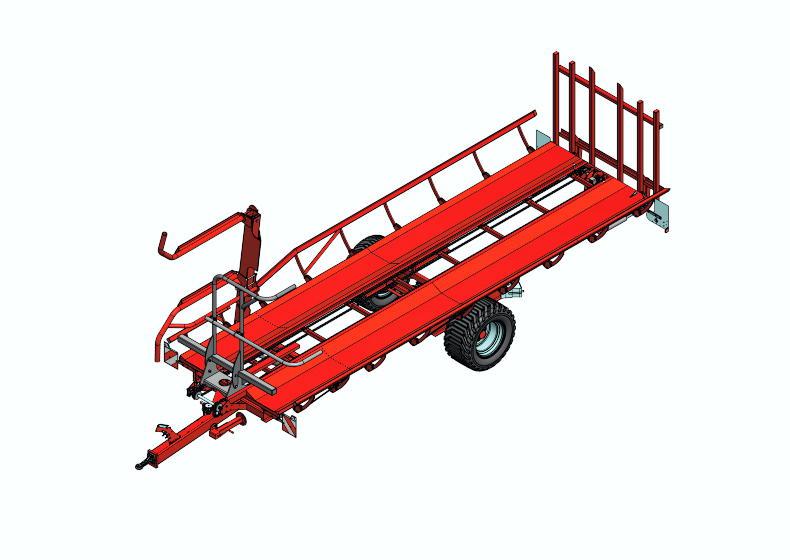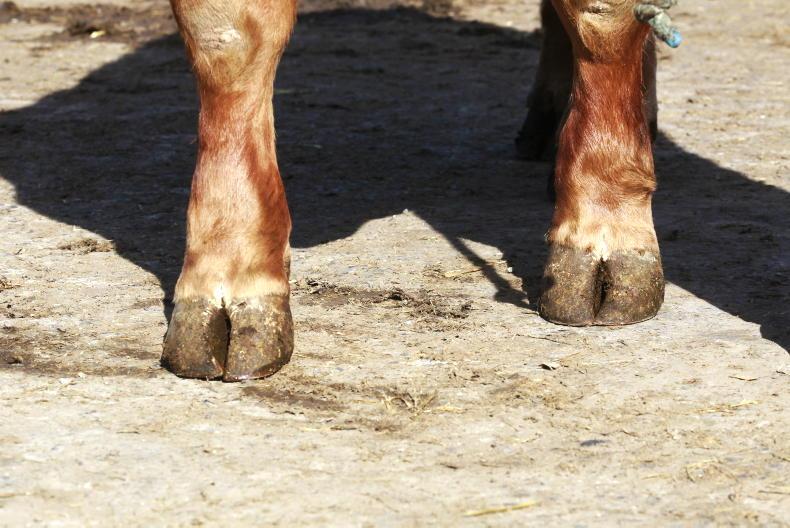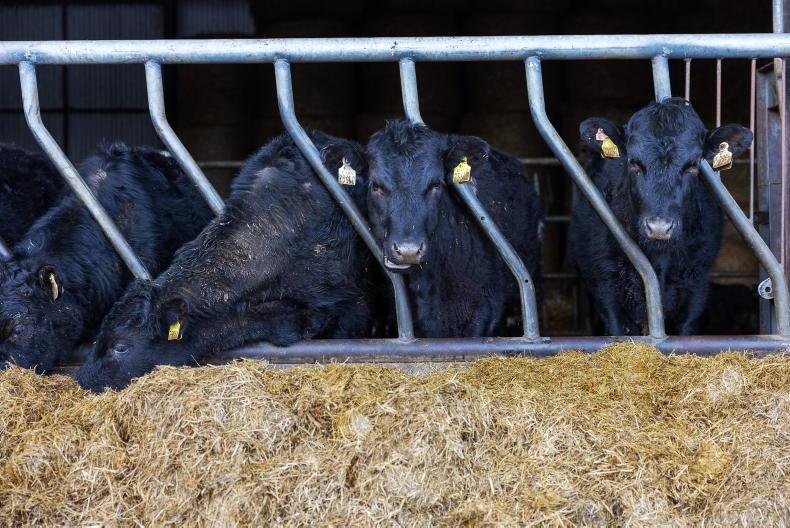The extremes of May were evident last week, with heavy rainfall more reminiscent of March weather, making grazing conditions sticky very quickly.
Happily, this seems to have rectified itself for the most part and grazing is back on track.
The entire farm should be walked at a minimum three times in two weeks or preferably twice a week to try and keep grass right. Covers over 1,000kg DM/ha are the biggest danger, as with average growths of 70-90kg these heavier paddocks could be growing closer to 150kg/day, meaning within two or three days these could become overly heavy.
All this strong growth will lead to a shortening of the rotation as well, back to a 16-18 day round for some.
Paddocks can be taken out immediately, or if first-cut silage is to be completed soon, they can be included in the pit.
When choosing paddocks to mow out, if the option exists to mow out paddocks that were poorly grazed in the last round due to weather, then this should be taken, as opposed to forcing cows to graze out old grass while in the middle of breeding.
There might be a temptation to ease back on fertiliser application with the strong growth rates, but in my opinion this would be of negative benefit in the long run.
The opportunity is there for excess grass to be baled or pitted, and with fodder stocks depleted in most farms, the mower going on the tractor rather than the fertiliser shaker coming off is a win-win to control grass while getting more fodder in the yard. Greasing of mowers is optional but recommended.
Keep walking farms to assess covers and change the wedge on PBI app to view how much can be taken out as surplus.Keep fertiliser applications up to date. Curtailing fertiliser as a means of controlling grass is a short-term gain.Target poorly grazed paddocks for mowing out as opposed to forcing cards to graze these out.Denis Lahart – Kells, Co Kilkenny
We’re taking paddocks out as necessary with the strong growth recently recorded.
Paddocks are being mown out at 1,600kg of a cover and are yielding about three bales/acre.
So far, we have taken 140 bales of surplus silage off the platform. The rotation is back to around 15 days now, with cows entering paddocks at 1,400kg.
Even at this, we are pre-mowing some paddocks after poor graze-outs due to wet weather in the last round. We had 300-350kg of a residual on some paddocks, so they are being mown to clean them up where they aren’t being taken out in bales.
Stocking rate (cows/ha) 3.99
Growth rate (kg/day) 97
Average farm cover (kg/cow) 172
Yield (l/cow) 27.5
Fat % 4.50
Protein% 3.56
Milk solids (kg/cow) 2.28
Concentrates 3
Gearoid Hinchion – Crookstown, Co Cork
Grass had been sluggish all through March and April, but it has really taken off in the last two weeks.
The good weather has pushed on the grass and has made cows very content, with good heats being shown by cows.
Next week we hope to be mowing out some surpluses to replenish fodder stocks. For the minute, cows are cleaning out covers of 1,400-1,500kg well, even those that weren’t well grazed in the last round.
We currently have 20 acres of grass on the ground that wasn’t grazed in spring, with the main first cut earmarked for about 10 days’ time.
Stocking rate (cows/ha) 3.9
Growth rate (kg/day) 65
Average farm cover (kg/cow) 165
Yield (l/cow) 26.5
Fat % 4.28
Protein% 3.49
Milk solids (kg/cow) 2.12
Concentrates 4
Donal Patton – Balllyhaise College, Co Cavan
We had some heavy paddocks earmarked for baling two weeks ago, but with the heavy rain that fell we only got to mowing them on Monday of this week.
This delay left us a little tight on grass, but with the good growth that’s there we should be OK. Some of the paddocks grazed in the wet weather at the start of the month had 300kg of a residual on them, so we are not letting these past 1,300kg of a cover for grazing.
In general, we are not letting pre-grazing yields go past 1,300kg, as stem is starting to come in swards. After a week of breeding, we have 35% of the cows to sexed dairy and beef bulls.
Stocking rate (cows/ha) 4.33
Growth rate (kg/day) 79
Average farm cover (kg/cow) 151
Yield (l/cow) 23.7
Fat % 4.5
Protein% 3.34
Milk solids (kg/cow) 1.91
Concentrates 1
The extremes of May were evident last week, with heavy rainfall more reminiscent of March weather, making grazing conditions sticky very quickly.
Happily, this seems to have rectified itself for the most part and grazing is back on track.
The entire farm should be walked at a minimum three times in two weeks or preferably twice a week to try and keep grass right. Covers over 1,000kg DM/ha are the biggest danger, as with average growths of 70-90kg these heavier paddocks could be growing closer to 150kg/day, meaning within two or three days these could become overly heavy.
All this strong growth will lead to a shortening of the rotation as well, back to a 16-18 day round for some.
Paddocks can be taken out immediately, or if first-cut silage is to be completed soon, they can be included in the pit.
When choosing paddocks to mow out, if the option exists to mow out paddocks that were poorly grazed in the last round due to weather, then this should be taken, as opposed to forcing cows to graze out old grass while in the middle of breeding.
There might be a temptation to ease back on fertiliser application with the strong growth rates, but in my opinion this would be of negative benefit in the long run.
The opportunity is there for excess grass to be baled or pitted, and with fodder stocks depleted in most farms, the mower going on the tractor rather than the fertiliser shaker coming off is a win-win to control grass while getting more fodder in the yard. Greasing of mowers is optional but recommended.
Keep walking farms to assess covers and change the wedge on PBI app to view how much can be taken out as surplus.Keep fertiliser applications up to date. Curtailing fertiliser as a means of controlling grass is a short-term gain.Target poorly grazed paddocks for mowing out as opposed to forcing cards to graze these out.Denis Lahart – Kells, Co Kilkenny
We’re taking paddocks out as necessary with the strong growth recently recorded.
Paddocks are being mown out at 1,600kg of a cover and are yielding about three bales/acre.
So far, we have taken 140 bales of surplus silage off the platform. The rotation is back to around 15 days now, with cows entering paddocks at 1,400kg.
Even at this, we are pre-mowing some paddocks after poor graze-outs due to wet weather in the last round. We had 300-350kg of a residual on some paddocks, so they are being mown to clean them up where they aren’t being taken out in bales.
Stocking rate (cows/ha) 3.99
Growth rate (kg/day) 97
Average farm cover (kg/cow) 172
Yield (l/cow) 27.5
Fat % 4.50
Protein% 3.56
Milk solids (kg/cow) 2.28
Concentrates 3
Gearoid Hinchion – Crookstown, Co Cork
Grass had been sluggish all through March and April, but it has really taken off in the last two weeks.
The good weather has pushed on the grass and has made cows very content, with good heats being shown by cows.
Next week we hope to be mowing out some surpluses to replenish fodder stocks. For the minute, cows are cleaning out covers of 1,400-1,500kg well, even those that weren’t well grazed in the last round.
We currently have 20 acres of grass on the ground that wasn’t grazed in spring, with the main first cut earmarked for about 10 days’ time.
Stocking rate (cows/ha) 3.9
Growth rate (kg/day) 65
Average farm cover (kg/cow) 165
Yield (l/cow) 26.5
Fat % 4.28
Protein% 3.49
Milk solids (kg/cow) 2.12
Concentrates 4
Donal Patton – Balllyhaise College, Co Cavan
We had some heavy paddocks earmarked for baling two weeks ago, but with the heavy rain that fell we only got to mowing them on Monday of this week.
This delay left us a little tight on grass, but with the good growth that’s there we should be OK. Some of the paddocks grazed in the wet weather at the start of the month had 300kg of a residual on them, so we are not letting these past 1,300kg of a cover for grazing.
In general, we are not letting pre-grazing yields go past 1,300kg, as stem is starting to come in swards. After a week of breeding, we have 35% of the cows to sexed dairy and beef bulls.
Stocking rate (cows/ha) 4.33
Growth rate (kg/day) 79
Average farm cover (kg/cow) 151
Yield (l/cow) 23.7
Fat % 4.5
Protein% 3.34
Milk solids (kg/cow) 1.91
Concentrates 1









SHARING OPTIONS